Your Free Gift The Basic Bundle for Fashion Designers
Your Free Gift The Basic Bundle for Fashion Designers
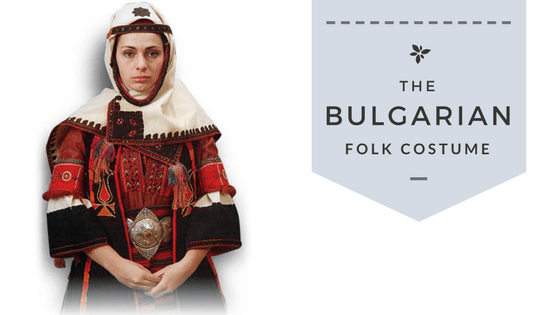
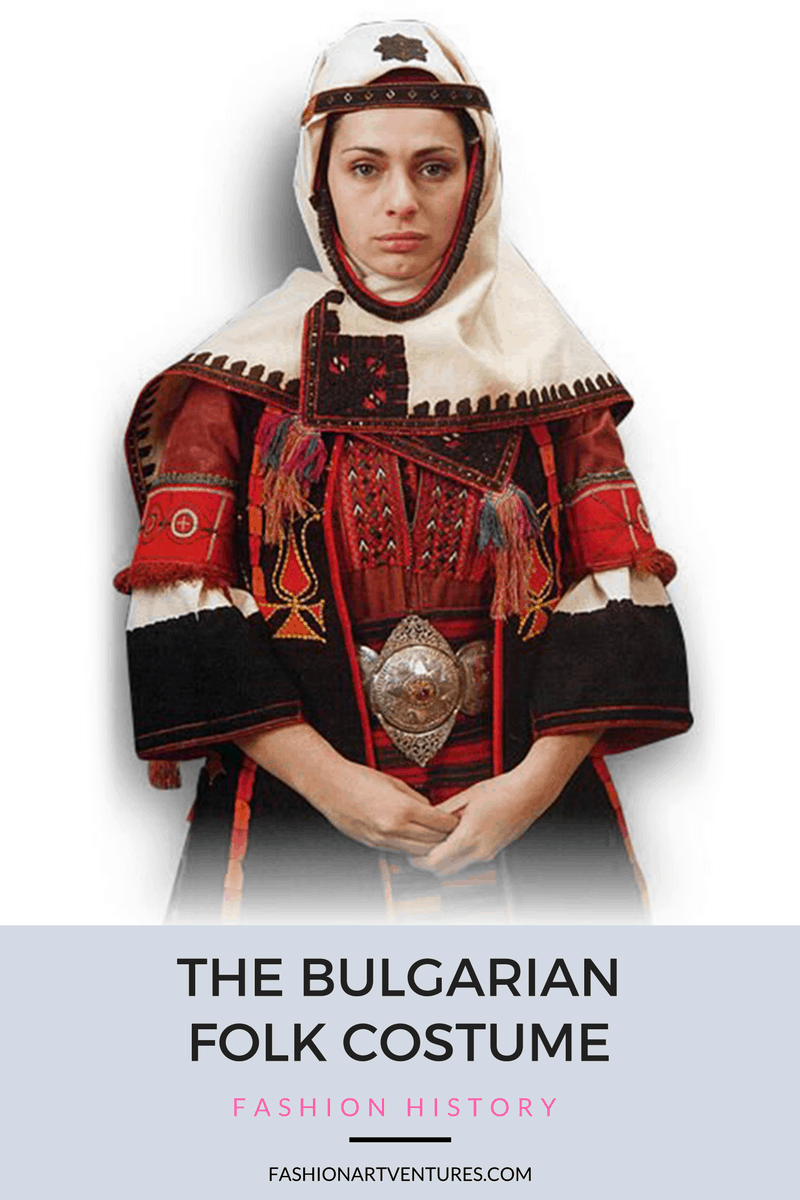 The Bulgarian folk costume was worn in Bulgarian villages until the beginning of the 20th century. These garments were hand-made in the villages using materials that were produced locally. The traditional materials are linen, hemp, wool, silk, and cotton.
The Bulgarian folk costume was worn in Bulgarian villages until the beginning of the 20th century. These garments were hand-made in the villages using materials that were produced locally. The traditional materials are linen, hemp, wool, silk, and cotton.
Bulgarian women made their costumes all by themselves. At the age of five, little girls started learning to spin wheels, sew, weave and prepare the trousseau for their weddings. From their twelfth year to the wedding, they were taught to embroider – this was the highest skill of all domestic crafts. Embroidery used to have great symbolic value. It was believed to protect the human body from evil spells and spirits. Once married it was usual in the past for a bride to be taken to her husband’s village taking with her dowry of which her folk costume formed part. Later her costume was passed on as a gift to her daughter.

The Bulgarian costumes contain many elements and motifs from the pagan beliefs and legends. No one wore clothes with fully symmetrical decorations, because Bulgarians believed that full symmetry was a diabolical creation. Therefore, elements were often added and removed, so that no symmetry should exist. Those were intentional mistakes in order to prevent the evil eye.
Each region of Bulgaria has its own costume with unique, typical motifs. A specific code is weaved into the ornamentation of the Bulgarian costumes – in the past, the Bulgarians used to rely on it for information about the family of those, who wore them, and the areas of the country, where they lived. Each costume had its message.
The basic structure of the clothing worn by men and women for workdays and holidays remained the same for many hundreds of years until urban-influenced fashion and factory produced clothes became available.
Bulgarian folk costumes consist of pants, shirts, vests and girdles for men, and dresses and aprons for women.
Commonly, female costumes are divided into four categories: one-apron, two-apron clothes, tunics, and the Saya garment. The aprons, dresses, and shirts are usually embroidered in regional colors and folk motifs. Red features heavily in Bulgarian folk dress, but black, green, and white are also a part of the traditional clothing.
The two-apron female costume is widespread in Northern Bulgaria. It consists of a chemise, two aprons (fastened at the waist, one worn in front, and the other at the back) and a belt. Fine embroidery decorates large portions of the sleeves and the front and back sections of the chemise. The two aprons (or “drapes”) were made of home-woven decorative fabric – the back one falling in folds and frills, the front piece consisting of one or two parts with horizontal or vertical embroidery.
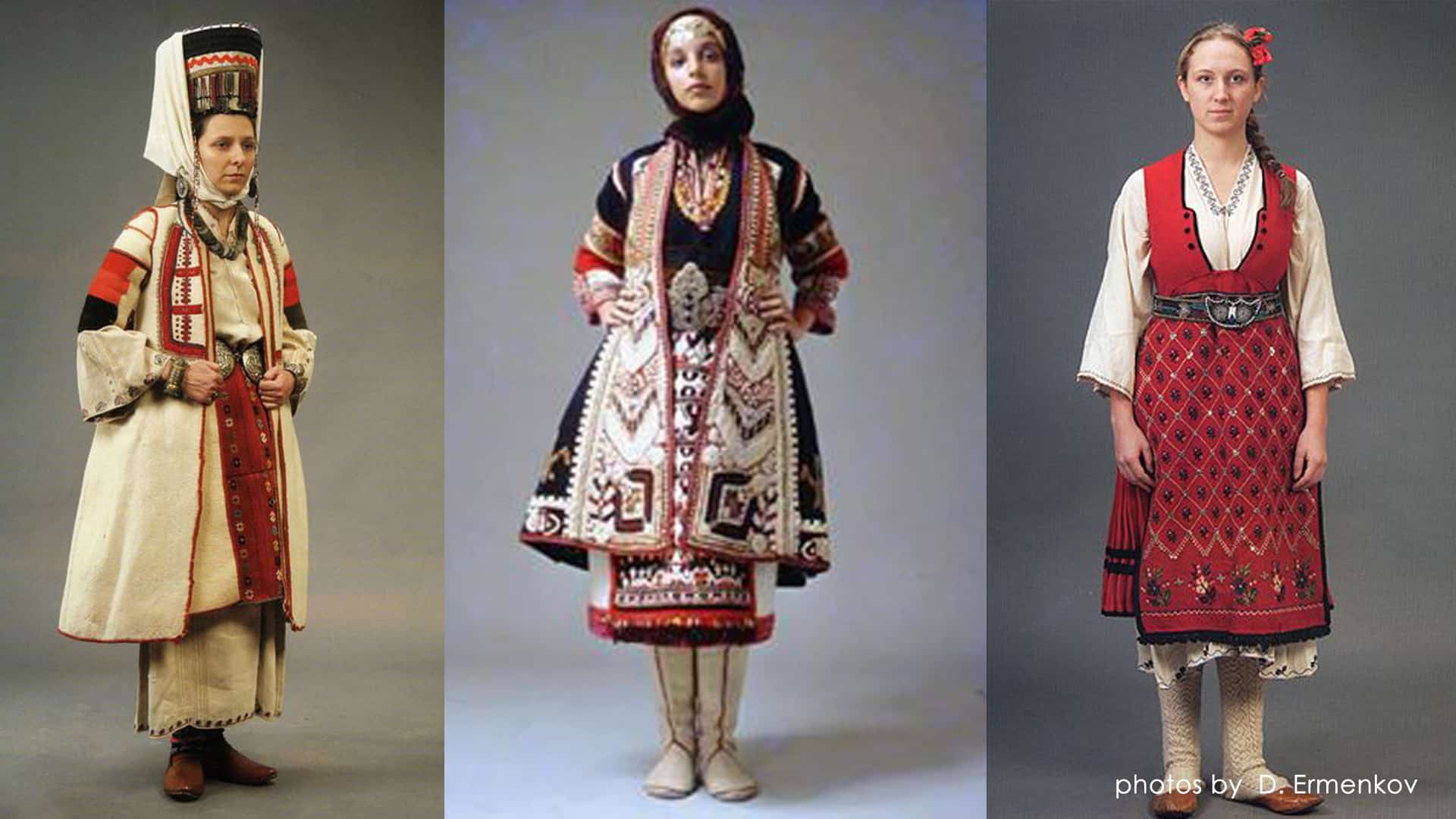
Most of the decoration of the Saya clothing is at the neckline and the sleeves. The costume consists of the colorful Saya (overcoat) with a trapezoid cut, chemise, apron, and belt/ girdle. The Saya costume used to be widespread in southern and southwestern Bulgaria. The decoration is concentrated on the bosom and the sleeves. This type of Bulgarian folk costume persisted till the middle of the 20th century in South Bulgaria and Macedonia. Predominant colors were the one-color white, black, blue, and dark blue saya dresses made of cotton or woolen fabrics.
The soukman or tunic was the most widely spread female costume and is typical for southeastern Thrace. It consists of chemise, tunic, apron, and belt; The soukman is most often a sleeveless dress, although in some places it has short or long sleeves. Typically, strips of the soukman fabric are attached to the sleeve openings forming the so-called “tails”, reduced decorative elements of former sleeves having lost their utilitarian function. The typical decoration is most noticeable at the foot of the dress and the neckline. The apron is the central decorative piece of the soukman dress. It is richly ornamented and colorful, standing out in beautiful contrast with the soukman.
The one–apron costume can be seen mostly in the Rhodope area. It consists of a chemise and one apron tied at the waist (either narrow, made of one piece, or wider, two-piece item) with a rather simple ornamentation. Till the first quarter of the 20th century, it was mainly typical of Bulgarian Moslem women in the Rhodope Mountains, since it was practical and met the requirements of their daily work activities. Characteristic of the women in the Rhodopes region was their preference for light yellow and orange, as well as grass-green shades skillfully combined in the texture of the apron
To all types of female costumes there were specific hair styles and arrangements of the head-clothing featuring jewellery, caps, scarves and flowers. Shoes, gloves, socks and fur coats for the winter were also decorated with very impressive regional and local specific items and embroideries.
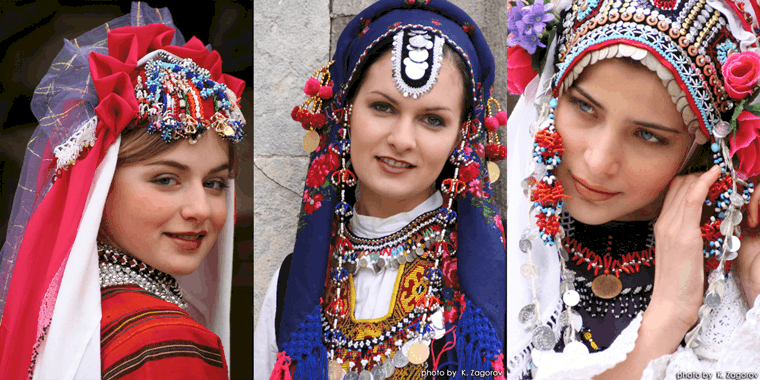
While female costumes are defined by the shape and cut of the dress, the male costumes are divided according to the shape and color of upper garments in two principal types: white-garment and black-garment.
The “white” male clothing consists of a shirt, tight or looser breeches or pants, wide girdle, belt and top clothes made of a white home-spun frieze. Upper garments modify the silhouette of the costume, whereas its decoration performs linear embroidered patterns and colored woolen bands/braids on the bosom and the chest, on the sleeves and the leggings. The waist-band is an essential element made of richly ornamented fabric. It is predominantly red, tightly wound around the waist.
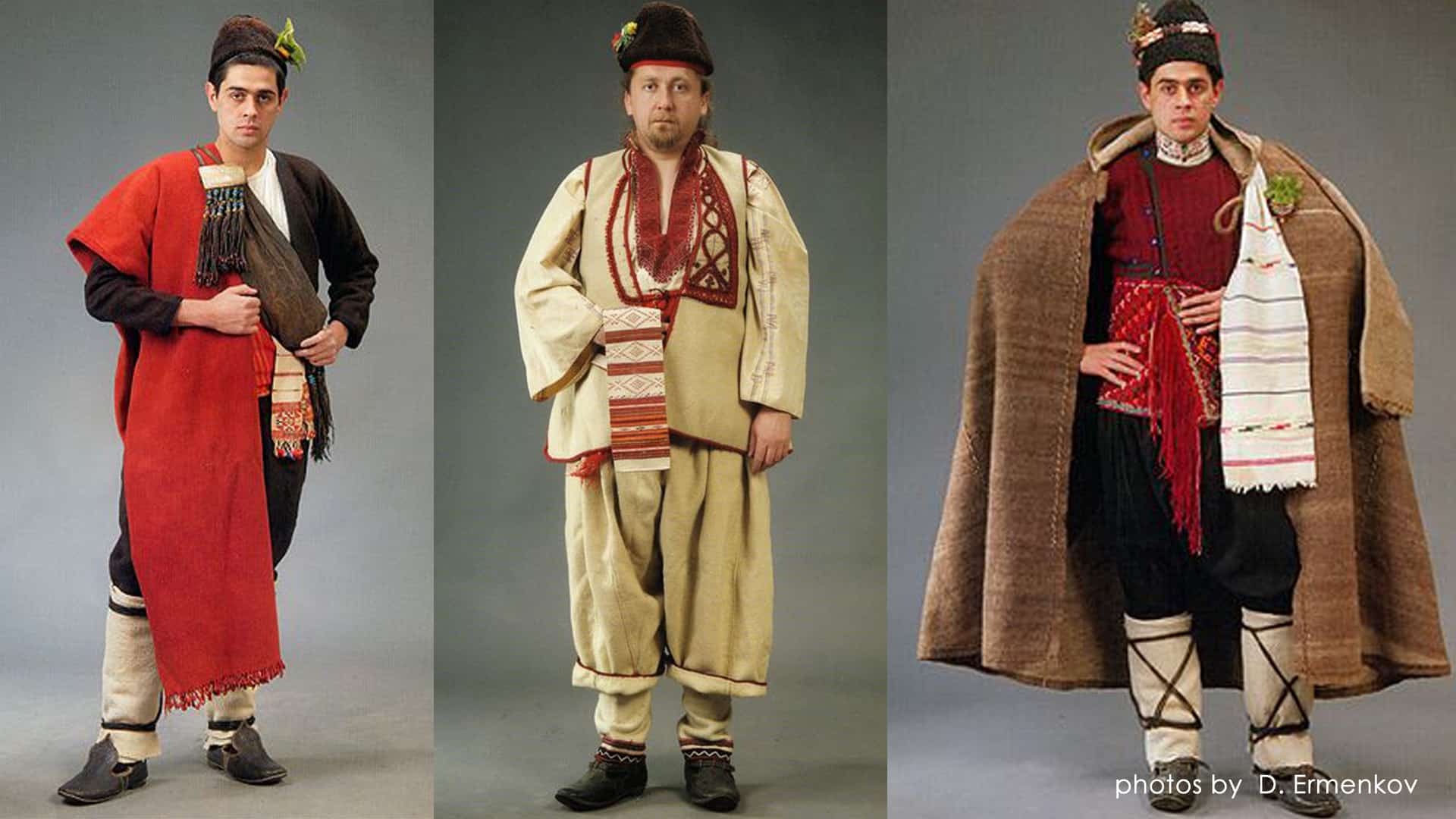
The “black” men clothing, which is typical for the Middle Rhodope Mountain region, consists of a shirt, loose wool trousers in a dark color, girdle, belt, a cap and an outer garment (a vest or a jacket with sleeves) made of a black woolen frieze. The earliest prototype is assumed to be the one consisting of a long shirt with skirts falling above the white woolen or cotton pants tied at the waist with a waistband or belt. This conservative style was preserved for a long time because it was suitable for the most common occupations – farming and cattle-breeding.
I’d love to hear from you in the comments below. What is the traditional clothing in your country?
Thank you so much for reading, watching, and sharing so generously.
https://www.youtube.com/watch?v=y-vM2z6P8K4
if you liked this post, you'll PROBABLY be into these—
Business tools, art materials, equipment
You wanna see my secret weapons for running my biz and creating art? Here is a sneak peek at what’s happening behind-the- scenes at Fashion ARTventures.
This is everything I have used and loved, from my art techniques and software, to my filming equipment and platforms that help me run my biz !
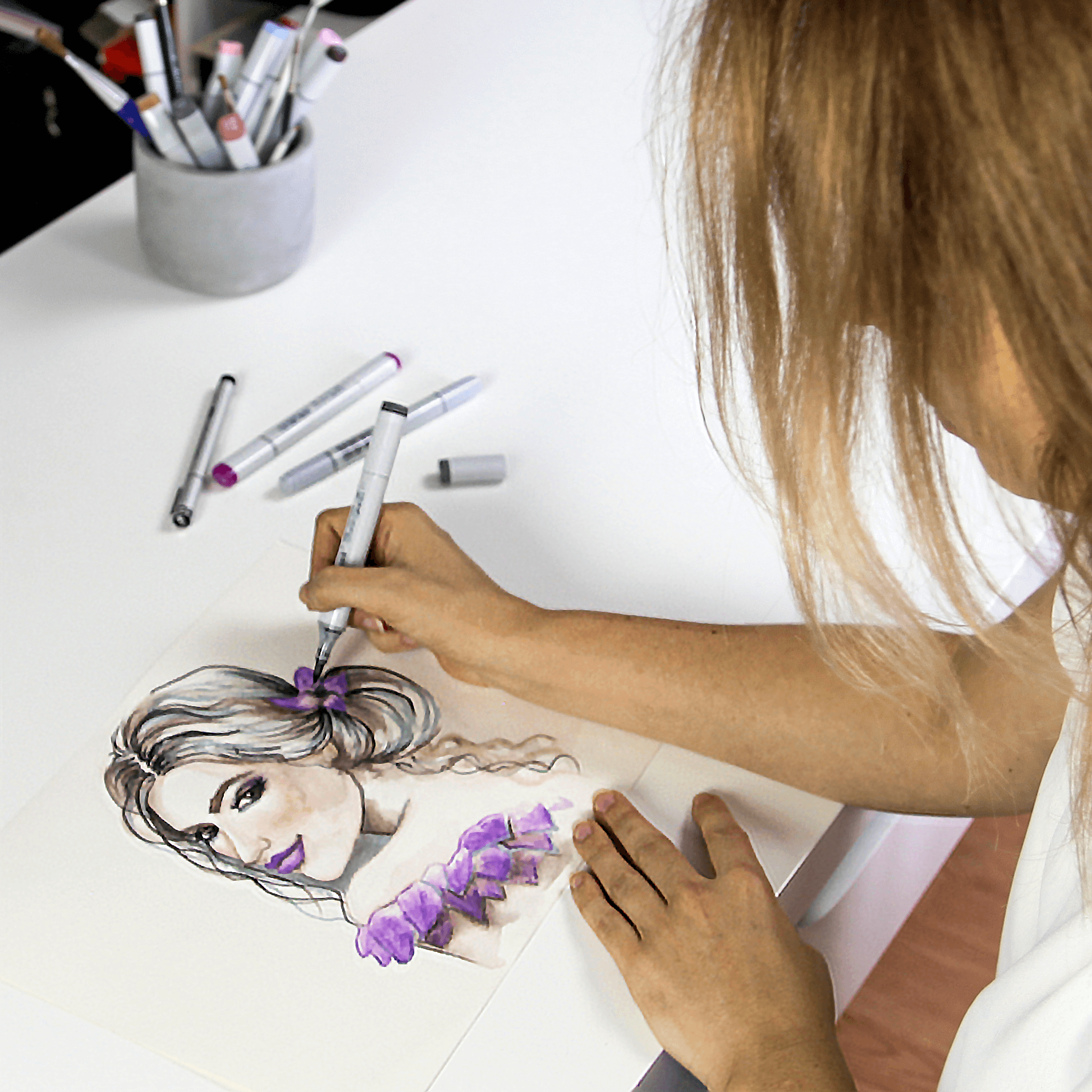
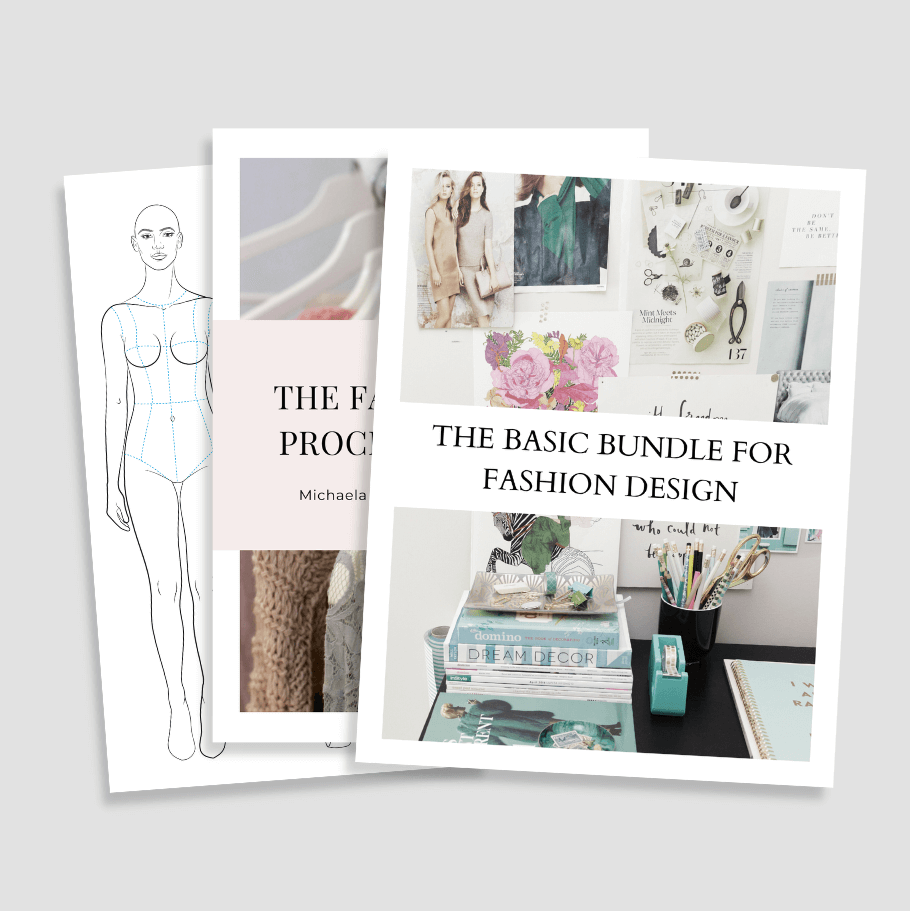
THE BASIC BUNDLE is a collection of female fashion templates in the most essential poses + the fashion design process checklist and the fashion figure proportion scale for sketching the croquis freehand.
Grab your favorite paints or your iPad, put on some chill tunes, find a cozy spot, and let us take you on a journey full of ARTventures! As you color, you’ll be practicing your artistic skills, exploring color combinations, and improving your eye for design.